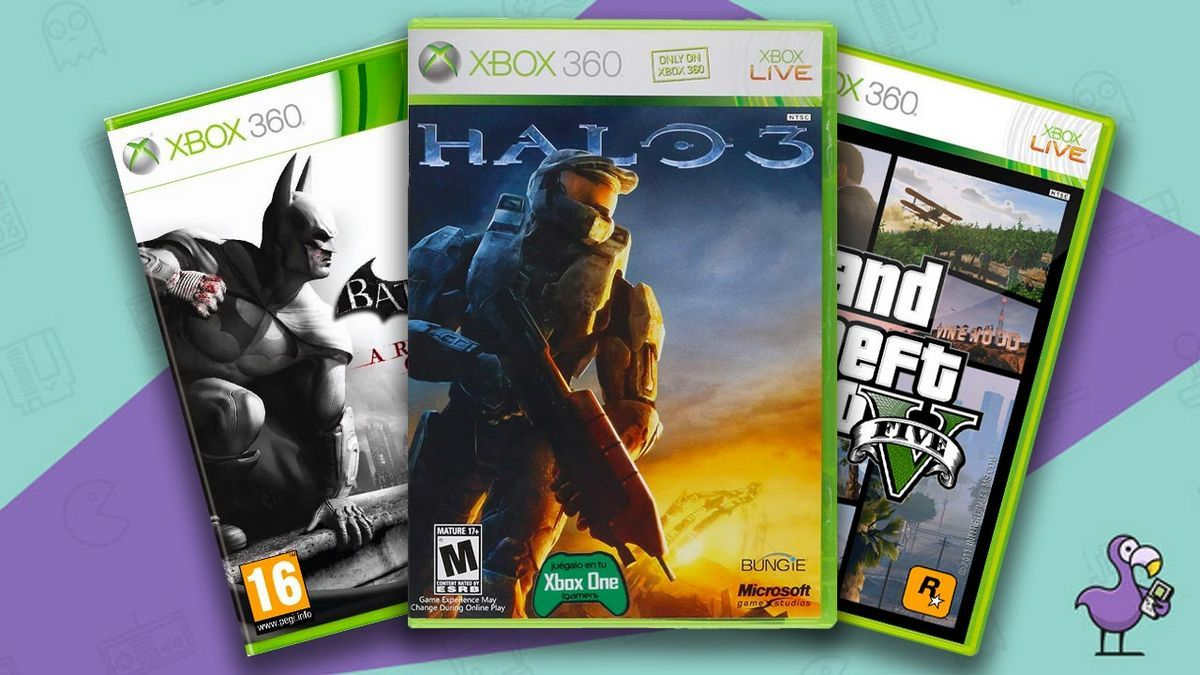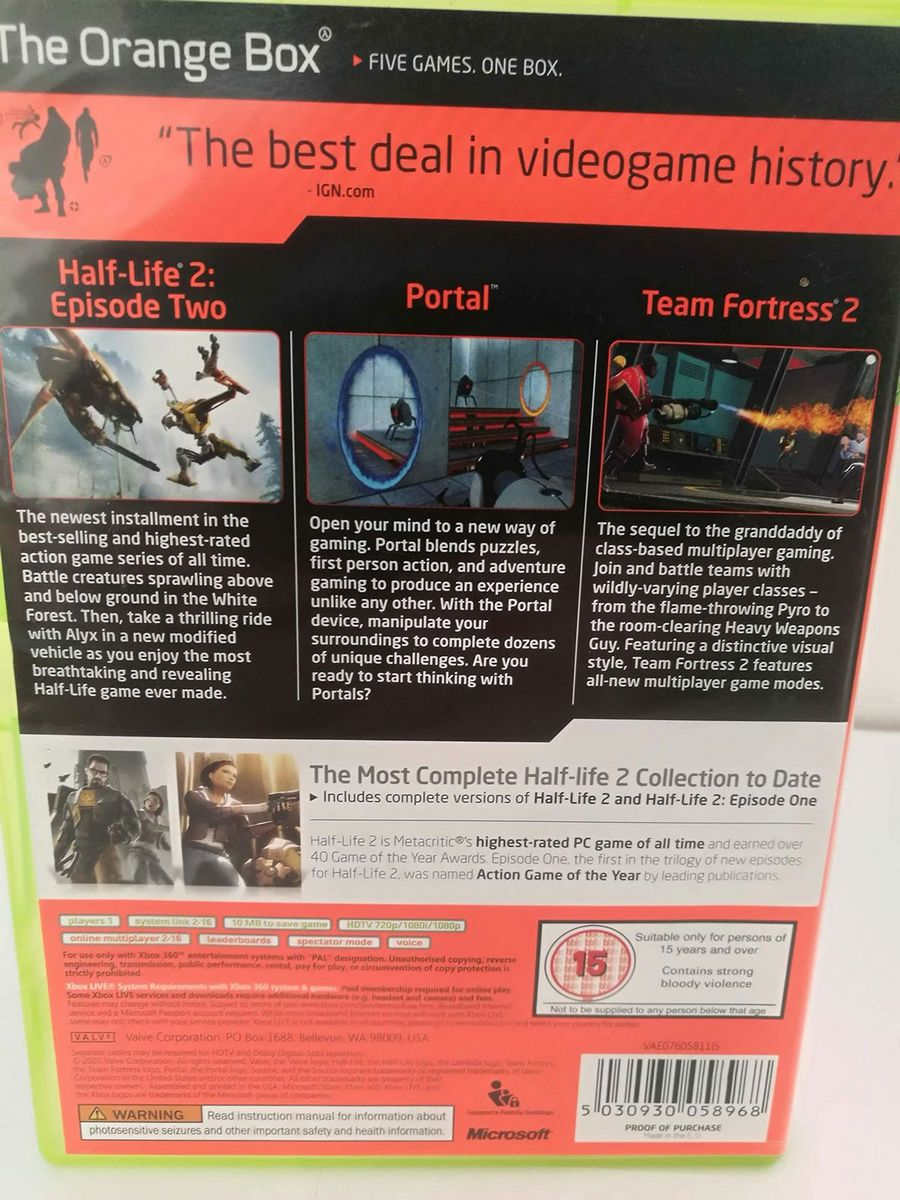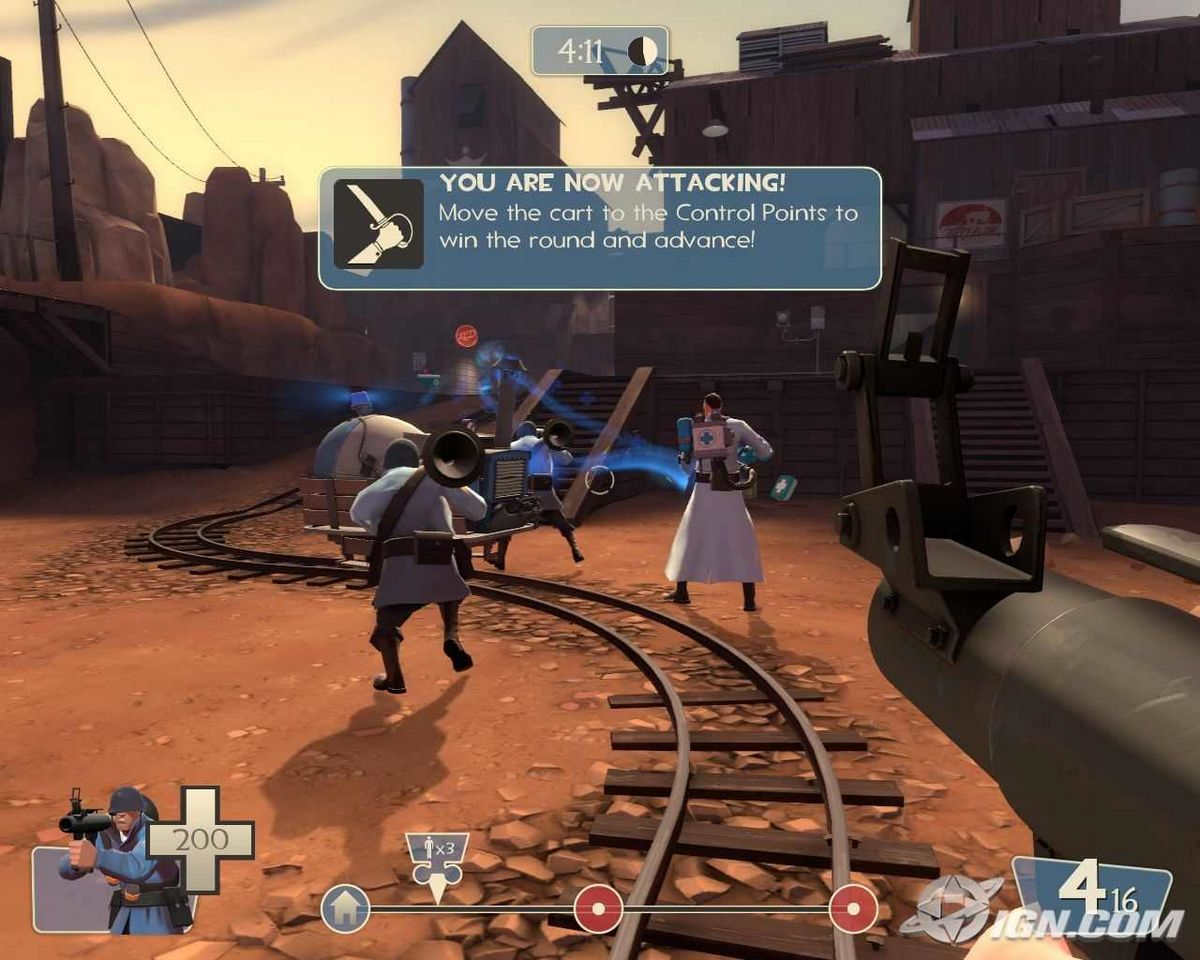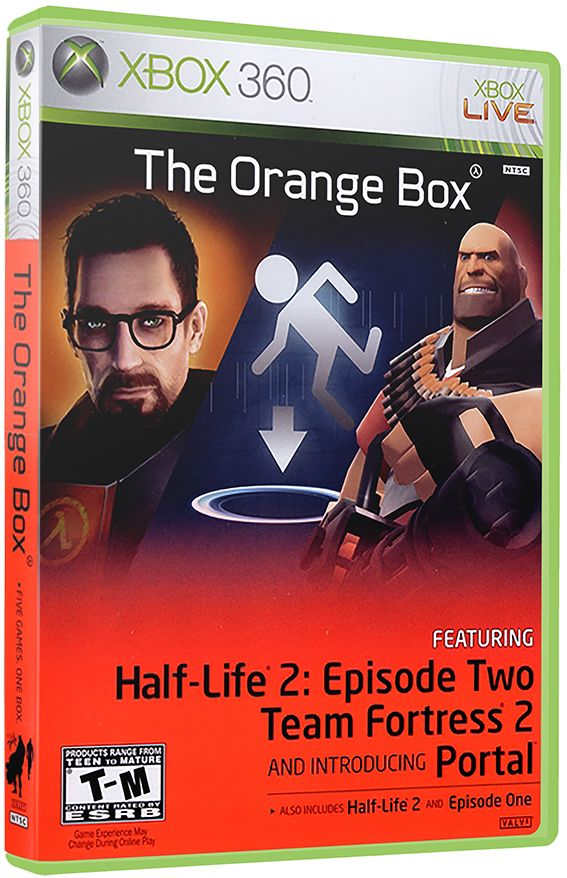The Orange Box is a critically acclaimed video game that has left an indelible mark on the gaming industry. Released in 2007 by Valve Corporation, it comprises five games – Half-Life 2, Half-Life 2: Episode One and Two, Portal and Team Fortress 2 – all bundled into one package. Each game boasts its own unique gameplay mechanics and storyline that seamlessly intertwine to provide gamers with an immersive experience unlike any other. The Orange Box has been praised for its innovative approach to storytelling, graphics, sound design, and multiplayer features.
As a professional in the gaming industry, I believe that The Orange Box represents a significant milestone in the evolution of modern gaming. From its intricate level designs to its captivating narrative structure built upon the renowned Source engine technology; this title embodies everything that makes gaming great today.
In this article, we will take an in-depth look at each component of The Orange Box suite of games. We will explore their individual mechanics while highlighting how they contribute to the overall experience offered by this masterpiece from Valve Corporation. Additionally, we will delve into what makes The Orange Box such a standout title among so many others within the same genre.
Join me as we go on a journey through some of the most memorable moments ever presented in modern video games with one of my favorite titles – The Orange box- as our guide!
- The Orange Box: A groundbreaking gaming collection that revolutionized the industry
- Analyzing the game mechanics of Half-Life 2, Portal, and Team Fortress 2 in The Orange Box
- Unpacking the narrative complexities and storytelling techniques of Half-Life 2 in The Orange Box
- Examining how Portal’s innovative gameplay design influenced future puzzle-platformers in The Orange Box
- Team Fortress 2’s lasting impact on multiplayer games and its legacy within The Orange Box collection
- Comparing the original releases versus re-releases of The Orange Box: How did they improve or detract from the gameplay experience?
- How Valve Corporation utilized episodic content to keep players engaged with both Half-Life 2 and its episodes included in The Orange Box
- Exploring fan theories about hidden connections between Half-Life 2, Portal, and Team Fortress 2 within The Orange Box universe
The Orange Box: A groundbreaking gaming collection that revolutionized the industry
It includes five different titles, including Half-Life 2, Team Fortress 2 and Portal. This groundbreaking gaming collection revolutionized the industry due to its unique combination of genres and gameplay styles.
One major innovation introduced by The Orange Box was the inclusion of both single-player and multiplayer modes in each game. Players could choose to experience an epic sci-fi adventure in Half-Life 2 or engage in fast-paced team-based combat in Team Fortress 2. Alternatively, they could test their problem-solving skills with Portal’s mind-bending puzzles.
Another key feature of The Orange Box was its use of the Source engine, which allowed for stunning visuals and realistic physics simulations. This helped set a new standard for graphics quality and immersion in video games at the time.
Overall, The Orange Box represented a significant step forward for gaming collections as well as first-person shooters (FPS) while also helping establish Valve as one of the leading developers in the industry. Its influence can still be seen today through popular FPS franchises such as Call Of Duty or Battlefield that have incorporated similar gameplay mechanics into their games since then.
Analyzing the game mechanics of Half-Life 2, Portal, and Team Fortress 2 in The Orange Box
The Orange Box was a revolutionary release that contained all three of these games in one package. Each game has unique gameplay mechanics that contribute to their individual success.
Half-Life 2 is a first-person shooter with an emphasis on physics-based puzzles and storytelling. The player is given a variety of weapons and tools that allow them to manipulate objects in the environment. Half-Life 2’s use of physics creates dynamic gameplay scenarios where players must think creatively to solve puzzles or defeat enemies.
Portal is a puzzle-platformer centered around using portals to navigate through levels. The game requires careful planning and quick reflexes as players must use both portals effectively while avoiding obstacles such as turrets and toxic waste pits.
Finally, Team Fortress 2 is a class-based multiplayer shooter featuring nine different classes each with unique abilities. Players can choose which class best suits their playstyle or team composition creating endless strategic possibilities.
Overall, The Orange Box offers some of the most diverse gameplay experiences available in modern gaming today. These games push the boundaries of what we expect from video games by offering engaging mechanics rooted in deep systemic design choices that create memorable moments for gamers everywhere.
Unpacking the narrative complexities and storytelling techniques of Half-Life 2 in The Orange Box
Valve Corporation’s use of complex narrative techniques has earned Half-Life 2 critical acclaim from both gamers and industry professionals alike.
One of the key storytelling techniques employed by Valve is environmental storytelling. The desolate cityscape of City 17 tells its own story through abandoned buildings and propaganda posters that are scattered throughout it. This technique adds another layer to the already rich narrative presented through character interactions.
Valve also utilizes non-linear narration to tell Half-Life 2’s story out-of-order, similar to how a movie might employ flashbacks or cutaways. The player must piece together elements of the plot as they progress through the game‘s levels, adding an element of mystery and intrigue that keeps players engaged.
Overall, Half-Life 2 represents a masterclass in video game storytelling. Its complex narrative structure combined with well-crafted characters and environments set it apart from other first-person shooters at the time – continuing to influence modern gaming narratives years after its release.
Examining how Portal’s innovative gameplay design influenced future puzzle-platformers in The Orange Box
The innovative gameplay design of Portal has had a significant influence on future games within the genre. One of the most notable features is its use of portals; players can create two interconnected portals to navigate through levels and solve puzzles.
This novel concept introduced new mechanics to puzzle platformers, which have now become standard in many games. For example, the 2011 game ‘Quantum Conundrum’ uses similar portal mechanics but adds different elements such as shifting dimensions and changing gravity. Another title that incorporates this feature is ‘A Story About My Uncle,’ where players utilize grappling hooks to swing while using portable teleports.
Portal also emphasized narrative storytelling in conjunction with gameplay mechanics. Rather than just being a mere tool for progression throughout levels, each aspect of Portal served an integral purpose towards telling the story and immersing players within its world.
In conclusion, Beyond introducing fresh ideas into puzzle-platformer genres like portal mechanic’s usage and immersive play style with deep stories being interwoven with it helped establish standards for subsequent titles from various developers across multiple platforms – ensuring that The Orange Box remains an essential gaming experience even today!
Team Fortress 2’s lasting impact on multiplayer games and its legacy within The Orange Box collection
Released as part of Valve Corporation’s The Orange Box collection in 2007, Team Fortress 2 redefined the first-person shooter genre with its emphasis on team-based gameplay, unique character classes, and quirky humor.
One of the key ways that Team Fortress 2 influenced multiplayer gaming was through its focus on teamwork. Unlike traditional deathmatch-style shooters where individual player skill is prioritized above all else, TF2 requires players to work together in order to achieve their goals. This cooperative approach has since become a staple of many other popular multiplayer games like Overwatch and Apex Legends.
Another lasting legacy of Team Fortress 2 is its cast of memorable characters. Each class has a distinct personality and set of abilities that encourages players to experiment with different playstyles depending on their preferences. This innovative approach to character design has been imitated by numerous other games over the years.
Finally, it’s impossible to talk about TF2 without mentioning its wacky sense of humor. From Heavy Weapons Guy’s famous catchphrase “I am heavy weapons guy” to Pyro’s eerie silence, each character brings something unique and hilarious to the table. This irreverent tone helped set Team Fortress 2 apart from more serious shooters at the time and remains one of its most beloved features today.

All told, there’s no denying that Team Fortress 2 had a profound impact on multiplayer gaming when it was released over a decade ago -and will continue doing so for years to come-. Its influence can still be seen in modern titles across various genres- proving just how much this game changed things up when it was originally released as part fo The Orange Box bundle back then!
Comparing the original releases versus re-releases of The Orange Box: How did they improve or detract from the gameplay experience?
The package included the critically acclaimed Half-Life 2 and its two expansions, Portal, and Team Fortress 2. Since then, The Orange Box has received several re-releases on different platforms such as Xbox One and PlayStation 3.
One significant improvement in the re-releases is the graphical upgrades that make gameplay more visually appealing. For example, Team Fortress 2 received an overhaul with new textures for its characters and maps to give it a modern look. Additionally, some versions of The Orange Box also include support for higher resolutions than those available during the original release.
However, these improvements come at a price: bugs that were present in earlier releases may have been fixed but new ones can emerge with each update or porting to another platform. Players have reported issues such as long loading times or multiplayer game crashes after updates on newer consoles.
Overall though, despite any potential drawbacks caused by changes made to improve graphics or fix bugs in later iterations of The Orange Box over time since its original release back when it first came out–the core gameplay experience remains intact throughout all versions of this amazing collection of games which has solidified itself among gamers worldwide as one of the must-play titles regardless if someone chooses to play it upon initial release or years down the line through various rereleases on different platforms!
How Valve Corporation utilized episodic content to keep players engaged with both Half-Life 2 and its episodes included in The Orange Box
They introduced a groundbreaking approach to storytelling through episodic content with their release of Half-Life 2 and its subsequent episodes, included in The Orange Box. This move allowed Valve to not only keep players engaged but also enabled them to deliver an immersive narrative experience that was unparalleled.
Through this approach, Valve was able to create a more fluid gameplay experience by breaking down the larger story into smaller chunks while still delivering it as a cohesive whole. Players could now immerse themselves in individual chapters without feeling overwhelmed or losing track of the overall plotline. Moreover, they were encouraged to explore different paths and possibilities within each episode, making for endless replayability.
The episodic model proved successful for Valve as it allowed them to maintain interest from both new and existing players alike over an extended period – something which had never been achieved before on such scale. With each chapter’s release came renewed excitement amongst fans who eagerly awaited what would happen next; thus driving up anticipation levels ahead of future releases. And so with every episode added into The Orange Box, Valve continued pushing boundaries while keeping players engaged throughout the game’s lifespan – truly revolutionizing how we interacted with games forevermore!

Exploring fan theories about hidden connections between Half-Life 2, Portal, and Team Fortress 2 within The Orange Box universe

Each game has its own unique gameplay and storyline, but many fans have speculated that there are hidden connections between these titles within the same universe.
One popular fan theory is that Aperture Science from Portal existed in the same world as Black Mesa from Half-Life 2. This theory is supported by subtle references to Black Mesa found throughout Portal’s environment and story, such as pictures of scientists wearing Black Mesa insignia on their lab coats. Additionally, it has been suggested that GLaDOS – the main antagonist of Portal – was originally developed at Black Mesa before being acquired by Aperture Science.
Another fan theory suggests that Team Fortress 2 takes place before the events of Half-Life 2. The game’s backstory mentions a war between two companies known as Reliable Excavation Demolition (RED) and Builders League United (BLU), which could be interpreted as factions fighting for control during the collapse of society seen in Half-Life 2. Furthermore, some fans believe that characters like Medic and Engineer may have worked for companies like Aperture Science or Black Mesa before joining RED or BLU.
Overall, while these theories remain unconfirmed by developers Valve Corporation themselves it doesn’t diminish just how richly interconnected The Orange Box universe really is – with each title adding layers upon layers to an already deep mythos surrounding this collection of beloved video games.
In conclusion, The Orange Box is a masterpiece of video game development that has set the standard for the genre. It is an excellent example of how innovation and creativity can be used to create immersive gaming experiences. The combination of Half-Life 2 and its two episodic sequels, along with Portal and Team Fortress 2, make for a truly diverse offering that caters to different tastes.

The game’s incredible graphics, sound design, gameplay mechanics, storyline elements, level design, and character development all contribute to making it one of the most enjoyable games ever made. It remains a popular choice for gamers even today.
Overall, The Orange Box is an incredible achievement in video game history that cannot be overlooked by anyone who loves this medium. It represents the pinnacle of what can be accomplished when developers put their minds together to create something extraordinary. If you haven’t played it already or want to relive some nostalgic memories – give it a try!
Read More:- Experience the Ultimate Game with Black Mesa – The Reimagining of Half-Life | 70 Characters.
- Explore Endless Possibilities with Game Portal 2: The Ultimate Gaming Experience!.
- Dive into the immersive world of Dwarf Fortress: A strategic game for true gamers.
- Explore the immersive world of Half-Life: Alyx and experience a new level of gaming excitement! (69 characters).
- Unleash your inner genie with Shantae: Half-Genie Hero – the ultimate game for adventure seekers!.
- Get Lost in the Action with Half-Life 2: Episode Two – The Ultimate Gaming Experience!.
- Get Ready to Conquer Your Enemies on Game Day with Defeat – Play Now!.